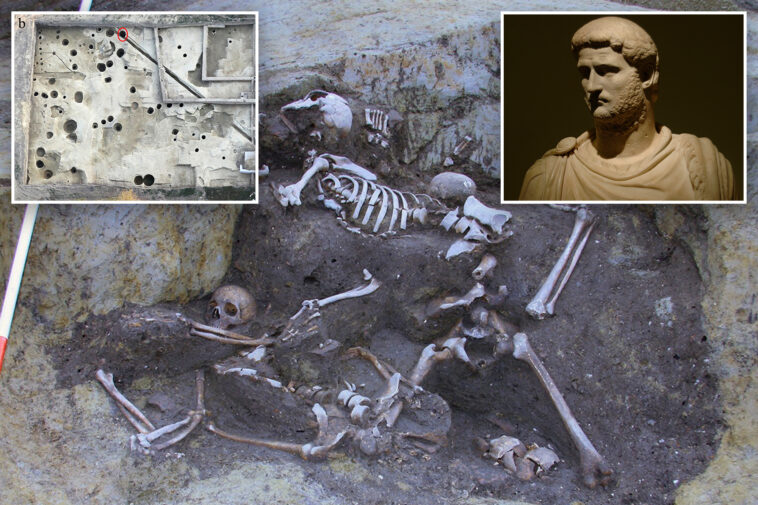Researchers recently identified the bodies of Roman warriors found stacked in an ancient water well in Croatia, a new study reveals.
The bodies were uncovered outside the city walls of Mursa, now modern-day Osijek, in 2011.
In a study published in October in PLOS One, researchers connected the corpses to the Battle of Mursa in 260 AD. The conflict was won by Emperor Gallienus, who defeated rebel commander Ingenuus.
The battle was part of Rome’s Crisis of the Third Century, when the empire nearly faced ruin due to civil wars and invasions.
Using radiocarbon dating and isotopic analysis, researchers determined that the men were between 18 and 50 years old when they died. The soldiers suffered from various sword cuts, punctures and broken bones.
2025 Novak et al
The specialists also learned about the men’s lifestyles. They had grain-based diets and showed signs of heavy physical labor.
Genetic testing also showed the soldiers came from a mix of Northern European, Eastern European and Eastern Mediterranean backgrounds.
Mario Novak, an associate professor at the Institute for Anthropological Research in Zagreb, who was involved in the study, spoke to Fox News Digital about the findings.
Some of the injuries found on the skeletons were sustained long before the men’s deaths, and Novak said those injuries were “nicely healed.”
“However, these injuries also tell us that they led violent lives, as most of these can be associated with violence, especially blunt-force injuries to the skull,” he added. “[They] went through multiple episodes of violence.”
Researchers were also able to differentiate those who died in battle — with injuries to the front of their skeletons — and those who were executed afterward.
They also found a coin in the well that was likely dropped by chance, Novak said, as the bodies would have been stripped of valuables.
Novak said he believes the deceased were “soldiers of the losing side.”
“The main intention was to humiliate them, even in death, by dumping them unceremoniously in a used well without proper care and any rites,” said Novak.
“If these were soldiers belonging to the winning side, our reasoning is that they would be buried in formal graves with full ceremony and not like this.”
The professor said he saw a similar grave with 25 adult males, with a dumped cow carcass on top — which also suggests deliberate humiliation.
“We can deduce that from the position of the skeletons, as they are located one above each other and completely articulated, and not commingled,” he said.
Start your day with all you need to know
Morning Report delivers the latest news, videos, photos and more.
Thanks for signing up!
“If the well was used some time after they were dropped in, the skeletons would be at the bottom and completely mixed due to disintegration of bodies.”
Novak added that it’s “quite unusual” to find similar graves within the borders of the Roman Empire.
“There are several known mass burials, but most of these are associated with epidemics of infectious diseases such as Justinian’s Plague,” he said.
“Mass graves associated with wars [and] battles are quite rare.”









